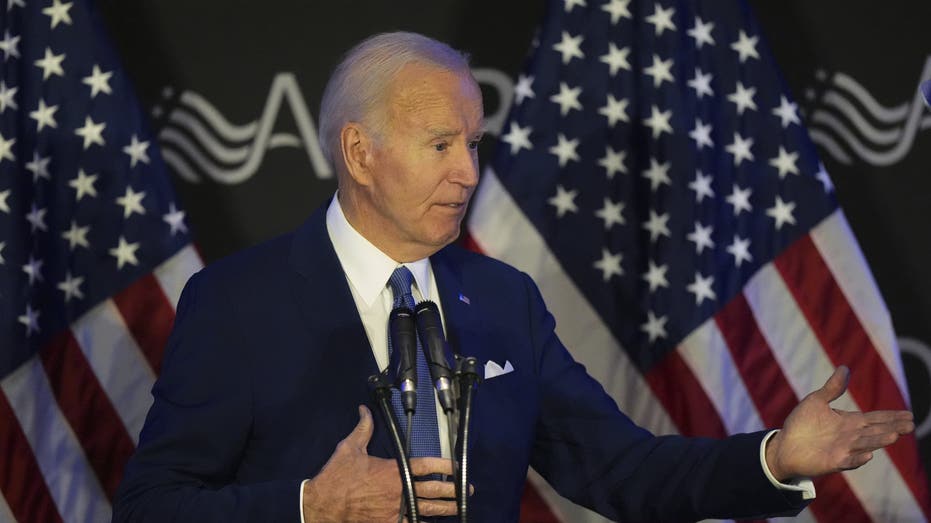As the United States navigates through a complex political landscape, the Democratic Party is grappling with a significant dilemma centered on President Joe Biden. The growing concerns around his leadership and policies have led many to question his effectiveness as a candidate for the upcoming elections.
Biden, who assumed office in January 2021, has faced numerous challenges that have not only impacted his presidency but also the Democratic Party at large. From rising inflation to foreign policy dilemmas, his administration’s actions and decisions are increasingly coming under scrutiny.
One of the most pressing issues is the economy. Inflation rates have soared to levels not seen in years, significantly affecting American households. The burden of skyrocketing prices on everyday goods has left many voters disenfranchised, leading to a dip in Biden’s approval ratings. A recent poll indicates that a majority of Americans are concerned about their finances, emphasizing the urgency of economic recovery. The Democrats’ struggle to present a coherent plan to address inflation could alienate voters ahead of the midterm elections.
Moreover, Biden’s handling of the pandemic, which was initially seen as a victory for his administration, has become a double-edged sword. While the widespread distribution of vaccines showcased leadership, the subsequent surge of COVID-19 variants has led to unfulfilled expectations. The public’s perception of the handling of ongoing health crises—including the recovery process and vaccinations—may linger well into the next election cycle. With vaccine hesitancy still a considerable concern and various health guidelines in flux, the Democratic Party faces a tough task in rebuilding trust with the electorate.
Furthermore, Biden’s legislative agenda, aiming for transformative changes in infrastructure, climate policy, and social reforms, has encountered considerable roadblocks. The ambitious $1.9 trillion American Rescue Plan garnered some support but also faced criticism for its perceived overspending. Similarly, efforts to pass a comprehensive climate bill have stalled, causing a rift within the party itself. Progressive Democrats advocate for bold initiatives, while centrist legislators caution against any measures perceived as too radical. This internal conflict could translate to disunity, potentially resulting in a lack of enthusiasm among core demographics ahead of key elections.
Compounded by external factors, such as geopolitical tensions and domestic unrest, the Biden administration has struggled to project a unified front. The controversial withdrawal from Afghanistan led to a chaotic exit that tarnished the U.S.’s global standing, raising questions about the administration’s foreign policy strategy. The fallout from this decision may carry long-term repercussions that affect not only Biden’s credibility but also the perception of Democratic leadership.
Another pivotal issue is the struggle for the Democratic Party to connect with the American public. While progressive policies resonate with some constituents, many voters feel overlooked as they deal with real issues in their daily lives. The party’s leadership must find ways to address the concerns of middle-class families who feel squeezed by economic pressures. There’s a growing sentiment that the party has lost touch with its base, creating an uphill battle as Democrats seek to regain favor in a fractured political environment.
The inability of the Democratic leadership to provide clear and compelling alternatives to the narratives put forth by the Republican Party further complicates their situation. Republicans have successfully capitalized on the vulnerabilities of the Biden administration, using messaging that appeals to various American concerns about security, fiscal responsibility, and cultural issues. In contrast, Democrats need to rejuvenate their messaging strategy to focus on tangible solutions that resonate with voters across the spectrum.
The question now is whether the Democratic Party can pivot and adapt to the widespread dissatisfaction with Biden’s performance. There’s no silver bullet solution. As former President Barack Obama once said, real change takes time, and there are no easy fixes when it comes to issues of trust and leadership.
While Biden remains a pivotal figure in the party, his age and ability to lead are subjects of ongoing debate. Concerns regarding his age perhaps expose an uncomfortable truth: Even if he wishes to run for reelection, many within the party are beginning to ask if a generational change is necessary to inject fresh energy and ideas into the Democratic Party’s platform. Such discussions prompt considerations on who may emerge as the potential successors should a shift in leadership occur.
Importantly, the future of the Democratic Party may also hinge on its ability to cultivate new leadership talent. The emergence of younger leaders who can galvanize enthusiasm among a diverse electorate could prove beneficial. By recruiting capable candidates who appeal to a broader audience, the party could better position itself to reclaim the narrative and the vote in upcoming elections.
As Election Day approaches, the party faces critical decisions in areas such as candidate selection, policy advocacy, and voter outreach. With midterm elections looming, Democrats must reconcile their internal divisions and present a united front. Voter turnout will be crucial, and any missteps could lead to significant losses, thereby jeopardizing the initiatives and policies laid out by Biden. The stakes have never been higher as party leaders and strategists ponder the best paths forward.
In light of these complexities, it is clear that the Democratic Party’s predicament is not solely about President Biden. It reflects a deeper struggle for the party to redefine its identity and reconnect with the concerns of American citizens. The next chapter for Democrats will be critical as they seek to reinvent themselves in this shifting political climate while addressing the pressing issues that represent the heart of America. How they respond to these challenges could ultimately determine not only their immediate success but their long-term viability as a leading force in U.S. politics.
Therefore, it is incumbent upon party leaders, elected officials, and grassroots activists to take heed of the sentiments expressed by their constituents. A proactive approach that prioritizes transparency and accountability may be the first step in mending the fissures within the party. Engaging closely with communities and heeding their needs will be essential for regaining trust and support.
In conclusion, the challenges facing the Democratic Party amidst concerns regarding Joe Biden’s presidency symbolize a broader struggle for both the party and the nation. The call for action is clear: There must be a concerted effort to address the underlying issues that are currently impeding progress. If Democrats can manage to rise above the fray and present a compelling vision that resonates with the American populace, they may just find a pathway to regain their footing and positively influence the future trajectory of the nation.
































